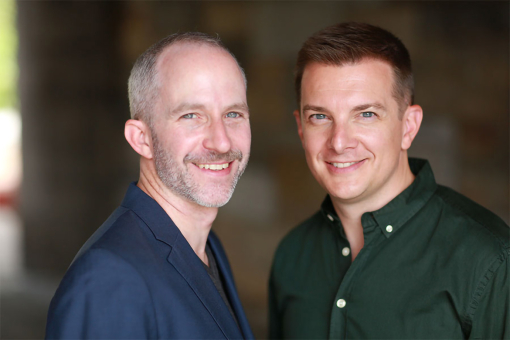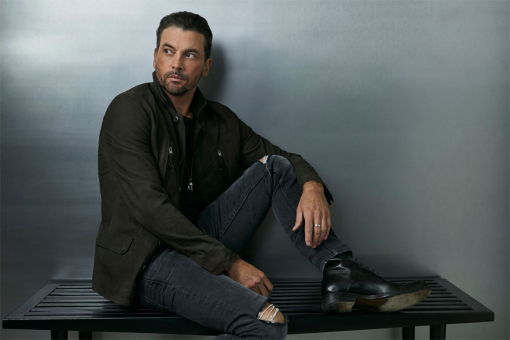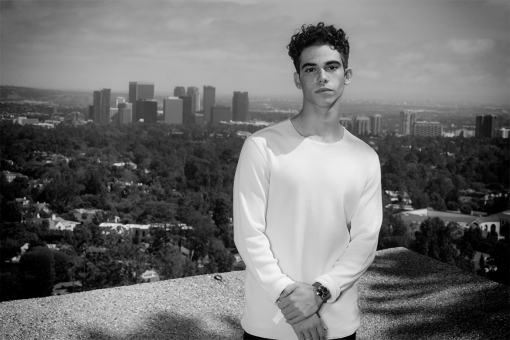There isn’t always a wardrobe closet on the set, especially when filming takes place outside and all over the world.
Amazon Prime's new series Hanna, can attest to that. Hanna is a high-concept thriller and coming-of-age drama that follows the journey of an extraordinary young girl who was raised in the forest, as she evades the relentless pursuit of an off-book CIA agent and tries to unearth the truth behind who she is.
The aesthetics of the show vary as we follow Hanna through different countries and it was Emily Batson's job to dress this ever-changing chameleon. Hanna, played by Esme Creed-Miles, goes through a style evolution in the series.
Television Academy.com had the chance to catch up with Batson recently to talk about her steps in the creative process to outfitting Hanna.
You studied Fashion Design at the Academy of Art College and earned your degree in Costume Design from UC Santa Barbara. What’s the difference between the two fields?
I discovered fashion as a teenager, and it blew my mind. There was definitely a time that I dreamt about being on Project Runway. Fashion is about looking really chic or elegant and what’s next and new. Costumes are often about not being noticed or conveying what’s appropriate for a story or situation.
How do you get started costuming a series?
One of my dear friends Sarah Adina Smith directed the pilot and called me and said "You have to do this. This is perfect for you." She had a mood board that was pretty abstract, with just feelings, and said "Can you turn this into costumes?’"
Amazon wanted to make the series a more updated version than the film and have it feel a little more grounded in the real world. For me, a starting point is always color. I like to assign a color palate to the different characters. Once you start to put everything together you realize some things work and some things don’t, even if you love it - it might not be the right thing.
What’s the process to get from a color board to capturing the essence of the characters?
It’s a really intuitive process. It takes trust and a process of discovery. A key part of being a costume designer is being able to work with the actors to make sure they’re comfortable and help them find their character through the clothes they’re wearing.
For example - we needed to have authentic coats that made them comfortable while shooting action scenes, then make five of them, then distress them. We worked a lot with the art department to bring all the worlds together for all the scenes.
The show starts out in the forest and evolves to different locations. How do the costumes reflect the character’s circumstances?
Yes, I think the thing about costumes is that sometimes you want them to be noticed and sometimes invisible. Hanna’s costumes are a good example of that.
Sometimes you do really notice them and others they just disappear. For the forest we wanted it to feel really organic, like she was in her element, so she had parts of wild animals on her. Then when she is detained by the CIA in Morocco, she had teeth and sticks in her pocket, and you see the CIA put them in a Ziploc bag – suddenly those costumes look bizarre.
Her location and circumstances change from episode to episode so she gets a whole new look.
Then she meets this teen girl, Sophie. Sarah (Adina Smith) had this idea that Sophie would be like a rainbow. She introduced Hanna to world she had never seen before, so we had a rule of three where Sophie always had at least three different patterns going, so like polka dot shorts, zig zag swim top and her iconic top with five different pattern and seven different colors.
What are some of the challenges you faced working on location?
Once we got to Budapest, which was our base and where we shot a lot of the show, we had to work within the limitations of what we could actually find. What you can find there is very different from what you can find here. We had totally different resources.
It was cool to do it that way because that’s what Hanna and her father, Erik, do in the forest. They made things by hand and adapted things they’ve found. Their world is made of what they’ve cobbled together, and that’s sort of how we did those costumes.
Can you tell us some of the standout costume moments of the show?
One of my favorite sequences in the first episode you see Hanna running through the forest and she crouches next to a stream and looks like one of the boulders. That was the goal - to portray that they were one with the environment even though they are human but imposing themselves on this natural world.
In episodes 7 and 8 Hanna discovers a center of institutionalized girls who are like her. We had a color palette with a sea foam green color that I was seeing all over eastern Europe. A kind of institutional mid-century green. It represented a world that Hanna was coming from and one she couldn’t escape.
We needed it to be effective and modern, so we decided to make a sweat suit. In the United States we would have ordered them on Amazon, but in Budapest we couldn’t find anything like it. We finally found some material and then someone who could dye it so we could make a hundred. I think it turned out okay (laughing.)
Do you always make your idea happen or do you have to go back to the drawing board?
I think it’s both. I really had to learn when to fight for things and when to surrender to the impossibility of it. But you can have a happy accident in finding the solution. I do have to be flexible sometimes and find a compromise.
How long did it take to shoot the show and were you onsite the whole time?
It was a seven-month shoot and we there the whole time. The forest was shot in Slovakia, and we were also in Budapest, Spain, Berlin and London. I got a LOT of stamps in my passport during this show.
We had about 20 people in our department. People were constantly aging and distressing clothes. You can’t just buy clothes and put them on people right away. It’s not glamorous, but it’s a lot of fun. You would never find yourself in these situations any other time.
What are some of the most unique costumes in your portfolio to date?
I have designed looks for Annie Clark (St. Vincent) for her tour, but I started working with her on a short (film) of a bizarre children’s birthday party where we made children’s costumes that were a little bit off. I made an eyeball, an Easter egg and a giant purple toilet.
What’s something you haven’t done that you want to?
I would love to do a full-blown period project. Every period is fun, but I love the 1930’s and the 1960’s.
I love filmmaking because it’s a bunch of adults playing a giant game of pretend. And everyone is taking it very seriously.













